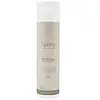Hjärtligt HS Schampo Versus Typology Anti-Dandruff Treatment Shampoo With 1% Piroctone Olamine + Jujube Extract
What's inside
What's inside
 Key Ingredients
Key Ingredients

No key ingredients
 Benefits
Benefits

 Concerns
Concerns

 Ingredients Side-by-side
Ingredients Side-by-side

Water
Skin ConditioningSodium Lauroyl Methyl Isethionate
CleansingCocamidopropyl Betaine
CleansingGlycerin
HumectantPanthenol
Skin ConditioningDisodium Cocoamphodiacetate
CleansingSodium Cocoyl Glutamate
CleansingLactic Acid
BufferingHydroxypropyl Guar Hydroxypropyltrimonium Chloride
Phenoxyethanol
PreservativeBenzoic Acid
MaskingDehydroacetic Acid
PreservativeTetrasodium Glutamate Diacetate
Vaccinium Myrtillus Bud Extract
AntioxidantWater, Sodium Lauroyl Methyl Isethionate, Cocamidopropyl Betaine, Glycerin, Panthenol, Disodium Cocoamphodiacetate, Sodium Cocoyl Glutamate, Lactic Acid, Hydroxypropyl Guar Hydroxypropyltrimonium Chloride, Phenoxyethanol, Benzoic Acid, Dehydroacetic Acid, Tetrasodium Glutamate Diacetate, Vaccinium Myrtillus Bud Extract
Water
Skin ConditioningLauryl Glucoside
CleansingGlycerin
HumectantSodium Lauroyl Sarcosinate
CleansingSodium Cocoyl Glutamate
CleansingPropanediol
SolventCoco-Betaine
CleansingCaprylyl/Capryl Glucoside
CleansingPiroctone Olamine
PreservativeHydrolyzed Sweet Almond Protein
Skin ConditioningPanthenol
Skin ConditioningZiziphus Joazeiro Bark Extract
Skin ConditioningSalvia Sclarea Oil
MaskingCedrus Atlantica Bark Oil
MaskingAllantoin
Skin ConditioningGuar Hydroxypropyltrimonium Chloride
Skin ConditioningLactic Acid
BufferingSodium Benzoate
MaskingPotassium Sorbate
PreservativeWater, Lauryl Glucoside, Glycerin, Sodium Lauroyl Sarcosinate, Sodium Cocoyl Glutamate, Propanediol, Coco-Betaine, Caprylyl/Capryl Glucoside, Piroctone Olamine, Hydrolyzed Sweet Almond Protein, Panthenol, Ziziphus Joazeiro Bark Extract, Salvia Sclarea Oil, Cedrus Atlantica Bark Oil, Allantoin, Guar Hydroxypropyltrimonium Chloride, Lactic Acid, Sodium Benzoate, Potassium Sorbate
 Reviews
Reviews

Ingredients Explained
These ingredients are found in both products.
Ingredients higher up in an ingredient list are typically present in a larger amount.
Glycerin is already naturally found in your skin. It helps moisturize and protect your skin.
A study from 2016 found glycerin to be more effective as a humectant than AHAs and hyaluronic acid.
As a humectant, it helps the skin stay hydrated by pulling moisture to your skin. The low molecular weight of glycerin allows it to pull moisture into the deeper layers of your skin.
Hydrated skin improves your skin barrier; Your skin barrier helps protect against irritants and bacteria.
Glycerin has also been found to have antimicrobial and antiviral properties. Due to these properties, glycerin is often used in wound and burn treatments.
In cosmetics, glycerin is usually derived from plants such as soybean or palm. However, it can also be sourced from animals, such as tallow or animal fat.
This ingredient is organic, colorless, odorless, and non-toxic.
Glycerin is the name for this ingredient in American English. British English uses Glycerol/Glycerine.
Learn more about GlycerinLactic Acid is another well-loved alpha hydroxy acid (AHA). It is gentler than glycolic acid but still highly effective.
Its main role is to exfoliate the surface of the skin by loosening the “glue” that holds dead skin cells together. Shedding those old cells leads to smoother, softer, and more even-toned skin.
Because lactic acid molecules are larger than glycolic acid, they don’t penetrate as deeply. This means they’re less likely to sting or irritate, making it a great choice for beginners or those with sensitive skin.
Like glycolic acid, it can:
Lactic acid also acts as a humectant (like hyaluronic acid). It can draw water into the skin to improve hydration and also plays a role in the skin's natural moisturizing factor (NMF) in the form of sodium lactate.
Studies show it can boost ceramide production to strengthen the skin barrier and even help balance the skin’s microbiome.
To get results, choose products with a pH between 3-4.
Lower strengths (5-12%) focus on surface exfoliation; higher strengths (12% and up) can reach deeper in the dermis (deeper, supportive layer) to improve skin texture and firmness over time.
Though it was originally derived from milk, most modern lactic acid used in skincare is vegan. It is made through non-dairy fermentation to create a bio-identical and stable form suitable for all formulations.
When lactic acid shows up near the end of an ingredient list, it usually means the brand added just a tiny amount to adjust the product’s pH.
Legend has it that Cleopatra used to bathe in sour milk to help reduce wrinkles.
Lactic acid is truly a gentle multitasker: it exfoliates, hydrates, strengthens, and brightens. It's a great ingredient for giving your skin a smooth, glowing, and healthy look without the harshness of stronger acids.
Read more about some other popular AHA's here:
Learn more about Lactic AcidPanthenol is a common ingredient that helps hydrate and soothe the skin. It is found naturally in our skin and hair.
There are two forms of panthenol: D and L.
D-panthenol is also known as dexpanthenol. Most cosmetics use dexpanthenol or a mixture of D and L-panthenol.
Panthenol is famous due to its ability to go deeper into the skin's layers. Using this ingredient has numerous pros (and no cons):
Like hyaluronic acid, panthenol is a humectant. Humectants are able to bind and hold large amounts of water to keep skin hydrated.
This ingredient works well for wound healing. It works by increasing tissue in the wound and helps close open wounds.
Once oxidized, panthenol converts to pantothenic acid. Panthothenic acid is found in all living cells.
This ingredient is also referred to as pro-vitamin B5.
Learn more about PanthenolSodium Cocoyl Glutamate is a gentle cleanser and surfactant. It is the sodium salt of the Cocoyl Glutamic Acid and comes from coconut oil. As a surfactant, it helps lift dirt and oil to be washed away.
Sodium Cocoyl Glutamate also has an emolliating effect and can help leave the skin feeling soft.
Water. It's the most common cosmetic ingredient of all. You'll usually see it at the top of ingredient lists, meaning that it makes up the largest part of the product.
So why is it so popular? Water most often acts as a solvent - this means that it helps dissolve other ingredients into the formulation.
You'll also recognize water as that liquid we all need to stay alive. If you see this, drink a glass of water. Stay hydrated!
Learn more about Water